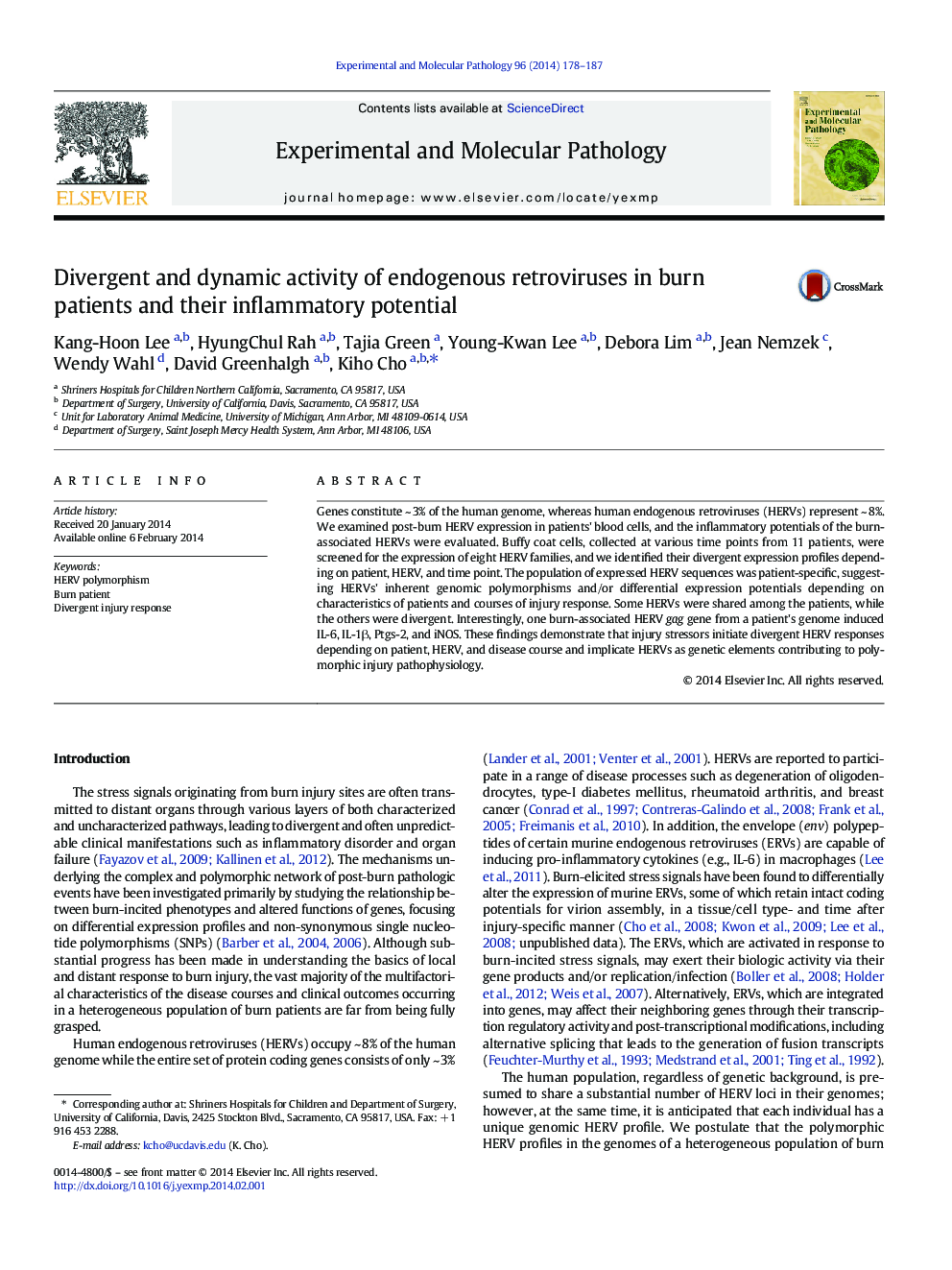| کد مقاله | کد نشریه | سال انتشار | مقاله انگلیسی | نسخه تمام متن |
|---|---|---|---|---|
| 2775224 | 1152317 | 2014 | 10 صفحه PDF | دانلود رایگان |

• Divergent and dynamic post-burn HERV expression profiles in blood cells of patients
• Patient-specific population of post-burn expressed HERV sequences
• Induction of IL-6, IL-1β, COX-2, and iNOS by gag gene of a burn-associated HERV
• Implication of HERVs as genetic elements contributing to divergent injury pathology
Genes constitute ~ 3% of the human genome, whereas human endogenous retroviruses (HERVs) represent ~ 8%. We examined post-burn HERV expression in patients' blood cells, and the inflammatory potentials of the burn-associated HERVs were evaluated. Buffy coat cells, collected at various time points from 11 patients, were screened for the expression of eight HERV families, and we identified their divergent expression profiles depending on patient, HERV, and time point. The population of expressed HERV sequences was patient-specific, suggesting HERVs' inherent genomic polymorphisms and/or differential expression potentials depending on characteristics of patients and courses of injury response. Some HERVs were shared among the patients, while the others were divergent. Interestingly, one burn-associated HERV gag gene from a patient's genome induced IL-6, IL-1β, Ptgs-2, and iNOS. These findings demonstrate that injury stressors initiate divergent HERV responses depending on patient, HERV, and disease course and implicate HERVs as genetic elements contributing to polymorphic injury pathophysiology.
Journal: Experimental and Molecular Pathology - Volume 96, Issue 2, April 2014, Pages 178–187